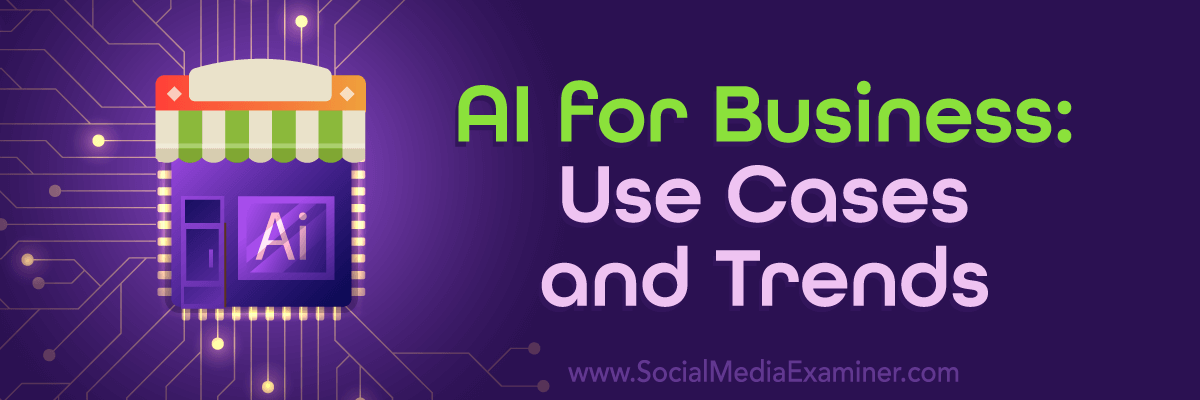Today's Guide to the Marketing Jungle from Social Media Examiner...
|
Presented by
|
 |
It’s Homemade 🥖 Bread Day, Reader! Is there anyone who doesn’t enjoy the smell of baking bread?
In today’s edition:
-
Instagram is 🌄 sunsetting 📗 Guides
-
Instagram rolls out new Reels 📊 metrics, 🤳 photo filters, and more
-
Instagram 👫 Close Friends filters for posts and Reels
-
💢 “Hashtags” come to 🧵 Threads
-
New TikTok ads 📈 measurement solutions
-
📰 News consumption on TikTok continues to grow
-
YouTube AI-generated 🎶 soundtracks for Shorts

Is your marketing strategy working? Is something not quite right with your content, but you can’t put your finger on it? Here’s a simple rundown to help.
3 Ways to Focus Your Marketing Strategy
Niche-Focused Marketing Strategy: This involves focusing on consistently creating content for a specific industry. For example, if your niche is fitness, you may create content about proper form, workouts, and protein. This strategy works well on Instagram, TikTok, and YouTube.
Audience-Focused Marketing Strategy: With this approach, you focus on creating content for a specific customer or client persona. For instance, you may aim to inspire college students to balance school, work, and self-care through your content. This strategy works well on YouTube.
Identity-Focused Marketing Strategy: Typically used by lifestyle creators this strategy can also serve solopreneurs. This involves attracting people who relate to you and your unique traits, such as your relationship status, gender, culture, location, hair type, career path, and other identity markers that play a role. This strategy works well on TikTok.
Today's tip is inspired by Millie Adrian, a featured speaker at Social Media Marketing World. Source: Instagram

Artificial intelligence (AI) is transforming digital marketing. Smart tools can now analyze huge amounts of data, generate new content, and even answer questions. As a social media marketer, you can take advantage of AI to work faster and smarter.
5 Ways Marketers Can Apply AI Tools
Extraction: Finding Relevant Data
The first way to tap into artificial intelligence is by using it for extraction. This means sifting through existing content to pull out specific pieces of data.
Analyze Social Media for Leads
For example, you could use an AI tool to analyze hundreds of thousands of tweets or other social media posts. The AI would extract relevant Twitter handles, Facebook profiles, and other user data to build a list of leads. This saves you the grunt work of manually going through each social media profile to find potential customers. The AI handles the data gathering for you.
Discover Keywords in Blogs
Another example is using AI to analyze blogs and articles related to your industry. The AI can rapidly read thousands of blog posts and highlight the most common keywords and topics. This gives you invaluable insight into popular search terms and discussion themes to incorporate into your own content. No more guessing which keywords you should target—let the AI uncover them for you based on actual usage across the web.
Listen to Podcasts for Brand Mentions
Finally, AI tools can listen to podcast episodes and pick out specific brand mentions or references to a person. For example, you could use this to monitor when your brand gets brought up by influencers and podcasters. The AI eliminates the need to listen to hundreds of hours of audio content. It serves you the relevant clips on a silver platter.
Summarization: Condensing Key Points
Another superpower of AI is summarization. This condenses long-form content down to key takeaways.
Get Insights From Podcasts and Videos
A great example is using AI to get the main discussion points and insights from podcasts, videos, and webinars. Rather than spending an hour listening to a podcast, you can get the top highlights in seconds in a text summary. This helps you quickly gather nuggets of wisdom from industry thought leaders without chewing through hours of content. Plus, you can scan for topics and mentions relevant to your brand.
Streamline Meeting Notes Taking
AI summarization also works for meetings. Instead of having someone furiously take notes, you can record the meeting and run the audio through summarization software. It will condense a long back-and-forth conversation into a digestible summary. You can even ask it to highlight key action items. This makes it easy to find the needle-in-the-haystack tasks buried in a long, meandering meeting.
Monitor Customer Service Trends
Customer service teams can use AI summarization to analyze calls and spotlight trends. For example, the AI could detect spikes in questions about a certain product or complaints about a recent change. This gives management clear insights into pain points and topics that need addressing. Otherwise, these trends could get lost in hundreds of hours of customer conversations.
Rewriting: Restyling With AI
AI rewriting takes summarization one step further. While summarization condenses information, rewriting delivers that same information in a completely new style.
Adjust Tone and Formatting
For example, you could rewrite a very formal email to use more casual, conversational language for a friendlier tone. Or you could take a short social media post and rewrite it as a long-form blog article with more detail. The key benefit is the AI handles the grunt work of putting the ideas into new words and formats. This makes it easy to tailor messages for different mediums and audiences without starting from scratch.
Repurpose Content
AI rewriting is also great for repurposing existing content. For example, you could take a popular social media post and rewrite it as a blog post, video script, email newsletter, or other formats. This multiplication of content takes your best-performing messages and gives them new life across multiple channels. The AI does the heavy lifting while you simply guide it on style and formatting.
Refresh Old Content
Finally, rewriting can revive and refresh old evergreen content. Simply feed your AI assistant a blog post from a few years ago and ask it to rewrite the post in a modern voice. The AI will carefully rephrase and update the post to make it feel current. This saves you from overhauling all your content manually every time you want to give it a facelift.
Classification: Organizing Content
AI also provides effective classification capabilities. This allows you to automatically sort vast amounts of content into topics and categories.
Sentiment Analysis for Social Media
For example, you can use AI tools to classify the sentiment of social media mentions of your brand as positive, negative, or neutral. You could also categorize social media posts by the intent behind them such as feedback, questions, or reviews. This gives you a helpful bird's eye view of the social media landscape. You can instantly see where the greatest challenges or valuable options lie with your brand's social reputation.
Categorize Support Queries
Customer support teams can use AI classification to analyze incoming support tickets and automatically categorize them by topic and urgency. This results in faster response times. Plus, it gives support managers insight into the most common customer queries they should consider addressing proactively.
Tag Content by Topic
Marketers can also use AI classification for tagging content. For example, auto-tagging blog posts with relevant topics makes it easier to organize them into categories. The AI takes care of the grunt work instead of editors needing to manually tag every piece of content.
Question-Answering: AI Assistance
The most sci-fi domain of AI is question-answering. This is where you can simply ask the AI a question and get a helpful answer in natural language.
Conversational Search
Question-answering AI vastly improves search experiences. Instead of hunting through lists of links, you can get a direct answer to queries like "What was the highest-grossing movie in 1995?" This makes AI assistants feel more conversational and human.
AI Support Agents
Some companies are already using question-answering AI to respond to customer service FAQs. The AI handles commonly asked questions while directing humans to more nuanced queries. With some training on your products and tone, such AI could act as a supplemental support agent scaling your team.
Quick Answers for Busy Marketers
AI assistants like ChatGPT can also provide on-demand support for busy marketers. While it shouldn't fully replace human intelligence, question-answering AI can offer quick help on things like content strategy outlines, social media trend explanations, basic business advice, and marketing task to-do lists. This provides casual assistance whenever you need a second opinion or an extra set of hands.
Adding AI to Your Daily Workflow
If you want to add artificial intelligence to your workflow, you'll need to become a prompt engineer. Prompt engineers understand how to write prompts that get the best possible output from machine intelligence tools.
To start your training, we'll focus on ChatGPT, which is currently one of the most sophisticated and widely used generative AI mechanisms. Other AIs will respond to prompts slightly differently because each has its own secret sauce.
There are four key elements to an effective prompt:
-
Role. Tell the AI who it should impersonate: an expert, a customer, an ordinary Jane or Joe.
-
Task. Tell the AI what content you want it to create. Give detailed requirements like format, style, word count, and any calls to action you want to include.
-
Background. Give the AI all of the data it needs to create the content, including information about your audience, positioning, and aims.
-
Execute. Ask the AI to start creating.
AI doesn't replace human intelligence and creativity—it enhances it. Approach these tools as a helpful assistant, not an automatic solution. By combining AI's strengths with your marketing expertise, you can accelerate content production, data analysis, and social conversations. This frees up more time and energy to do what matters most—connecting with real people.
Today's advice is provided with insights from Christopher S. Penn, a featured speaker at Social Media Marketing World.

Are You Feeling Overwhelmed by Rapid Change?
In our most recent study, 62% of marketers said they’re feeling overwhelmed by the current rate of change. And nearly half (47%) feel like their marketing is in a state of disruption.
Marketing is quickly evolving! The tools we use are changing. And of course, AI is at the heart of it all.
It's more important than ever to elevate your marketing skills. That's where the 11th Annual Social Media Marketing World can help. Attend to discover what’s working now.
I don’t want to feel overwhelmed anymore.

🗞 Instagram Guides: A change to the platform’s Guides feature originally spotted by App researcher Alessandro Paluzzi has been confirmed by Instagram. The platform is sunsetting the Guides feature and converting all existing Guides into private saved collections. Users can access their saved collections via ‘Saved’ in the profiles settings tab. Source: The Verge
🗞 Instagram Reels Metrics and More: Meta’s new Replays metric for Facebook and Instagram tracks when users replay a Reel multiple times. In addition, Reels Plays now include initial views of a Reel and Replays. Other updates to Reels include 25 new photo filters, 10 new English text-to-speech voices, 6 new text fonts and styles available in hundreds of languages, and a new media clip hub. Source: Instagram
🗞 Instagram Close Friends Lists: Instagram introduced a new feature that allows users to limit who can view their posts and Reels to just their "close friends" list. Previously, posts were either public or limited to followers. The close friends option adds more privacy, letting users share content with only their closest connections on the app. Posts limited to close friends will display a green star icon. Source: The Verge
🗞 Threads Hashtags: Threads users will soon be able to add a single tag to their posts by typing "#" followed by keywords. The tags will not display the "#" symbol but will appear as clickable blue links. Clicking on a tag will show other posts using the same tag, allowing users to explore content by topic or interest. The feature is initially being tested in Australia. Source: Mark Zuckerberg via Threads
🗞 TikTok Ads Measurement: TikTok has introduced a new measurement framework called Self-Attributing Network (SAN) integration to give app advertisers a more comprehensive view of how TikTok ads drive conversions beyond the limitations of click-based attribution models. SAN integration works with mobile measurement partners (MMPs) to capture additional conversions influenced by TikTok video views and clicks that MMPs miss. TikTok has also introduced Engaged View-Through Attribution (EVTA) to measure conversions driven by video views of 6+ seconds. Together, SAN and EVTA provide a clearer picture of TikTok's impact on conversions. They allow for custom attribution windows and capture engagements beyond clicks and last-touch attribution to optimize campaign performance. The goal is to better demonstrate TikTok's influence in multi-touch customer journeys. Source: TikTok
🗞 News Views on TikTok: News consumption on TikTok has grown rapidly among U.S. adults over the past few years. In 2023, 14% of U.S. adults report regularly getting news on TikTok, quadrupling from just 3% in 2020. TikTok news use is especially common among young adults ages 18–29, 32% of whom get news there. Among TikTok users overall, 43% now regularly get news on the platform, up from 33% in 2022. Still, news consumption remains higher on other platforms like X, though the gap is narrowing. TikTok's growth as a news source contrasts with declines in news use for many other social media sites. The data indicates TikTok is emerging as a news destination, particularly among young demographics in the U.S. Source: Pew Research
🗞 YouTube Dream Track: Facebook is testing a new experimental feature for Shorts called Dream Track that uses AI to generate soundtracks in the voices of certain musical artists. A small group of English-speaking creators in the U.S. can access Dream Track to add AI-generated vocals from nine artists like John Legend, Sia, Charlie Puth, and Demi Lovato to their Shorts. Any creator can then remix Shorts using these Dream Track soundtracks as long as Shorts and remixing are available in their region. Shorts with Dream Track will follow normal monetization policies but can't be downloaded. Viewers will know it is Dream Track content from the text labeling it as an AI artist voice and the purple+pink thumbnails. The goal is to connect musical artists and fans in a new way through Shorts. Source: YouTube
TOGETHER WITH YOUR BRAND

Want to get your message in front of more marketers?
Do you target marketers working for smaller businesses? If so, consider adding your offer to our newsletter. We know how hard it can be to get your brand in front of a valuable audience. That's where we can help.
Let us help you increase your brand exposure or bring in qualified leads for your team. Why not chat with us?
Contact Emily to place your ad here.
Did You Know?
Otto Frederick Rohwedder invented a machine in 1928 that both sliced and wrapped bread. Maybe we should start saying, “The best thing since sliced and wrapped bread!”

Michael Stelzner, Founder and CEO
P.S. Add
michael@socialmediaexaminer.com into your contacts list. Use Gmail?
Go here to add us as a contact.
We publish updates with links for our new posts and content from partners. Your information: Email:
you Opted in on: 2020-04-05 14:53:59 UTC.






